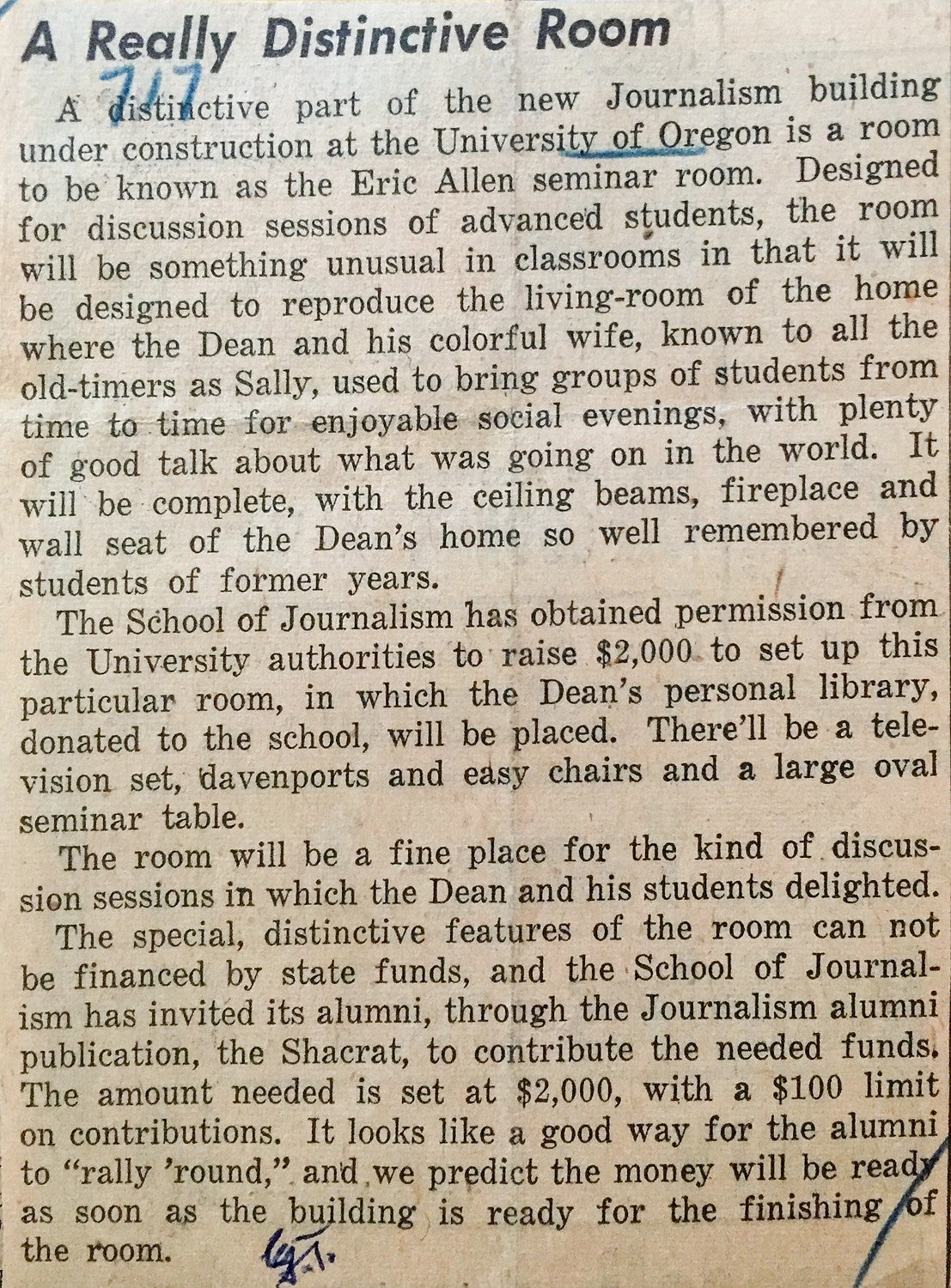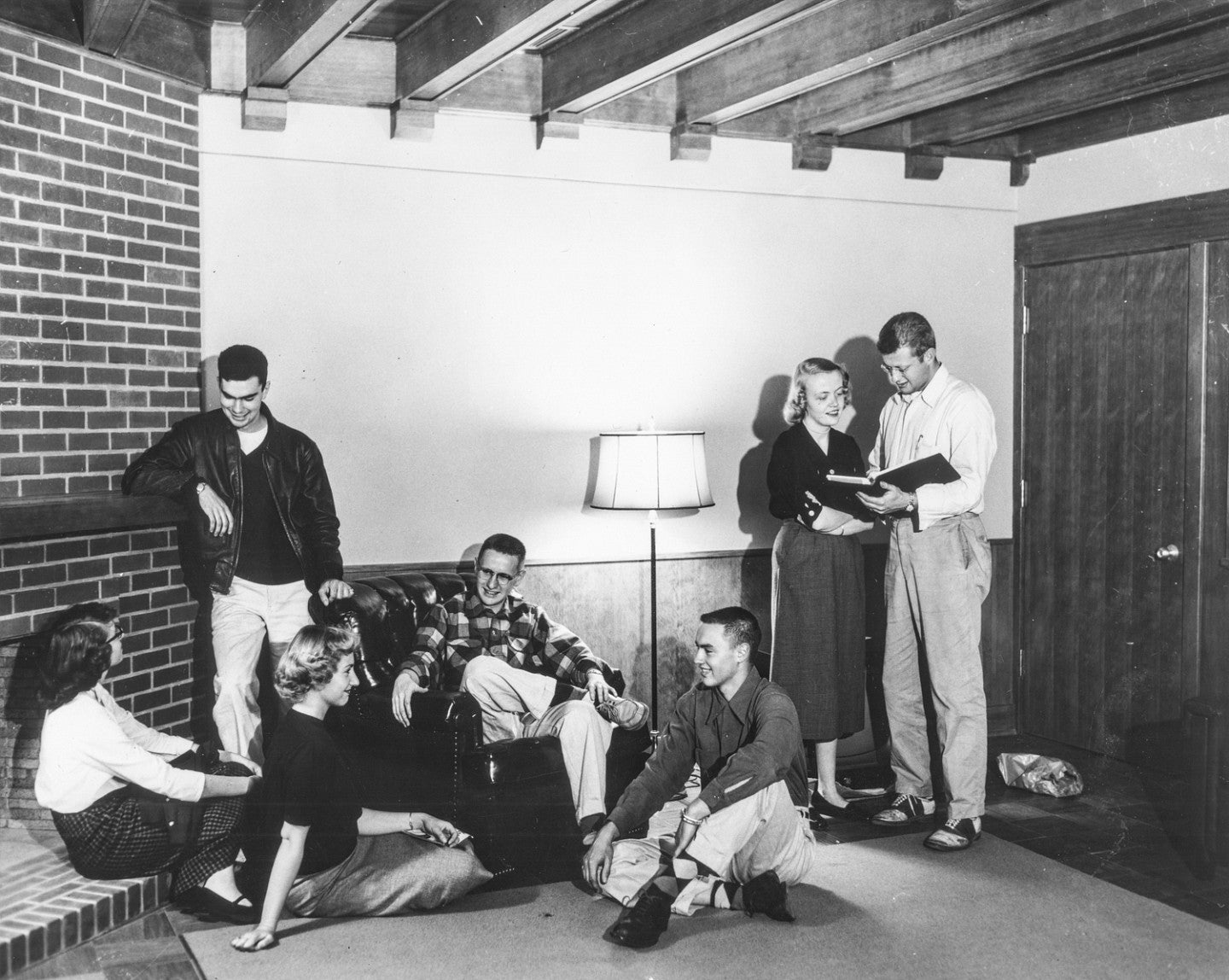The Eric W. Allen “Living Room” is a replica of the first SOJC dean’s study — a quiet space that preserves history.
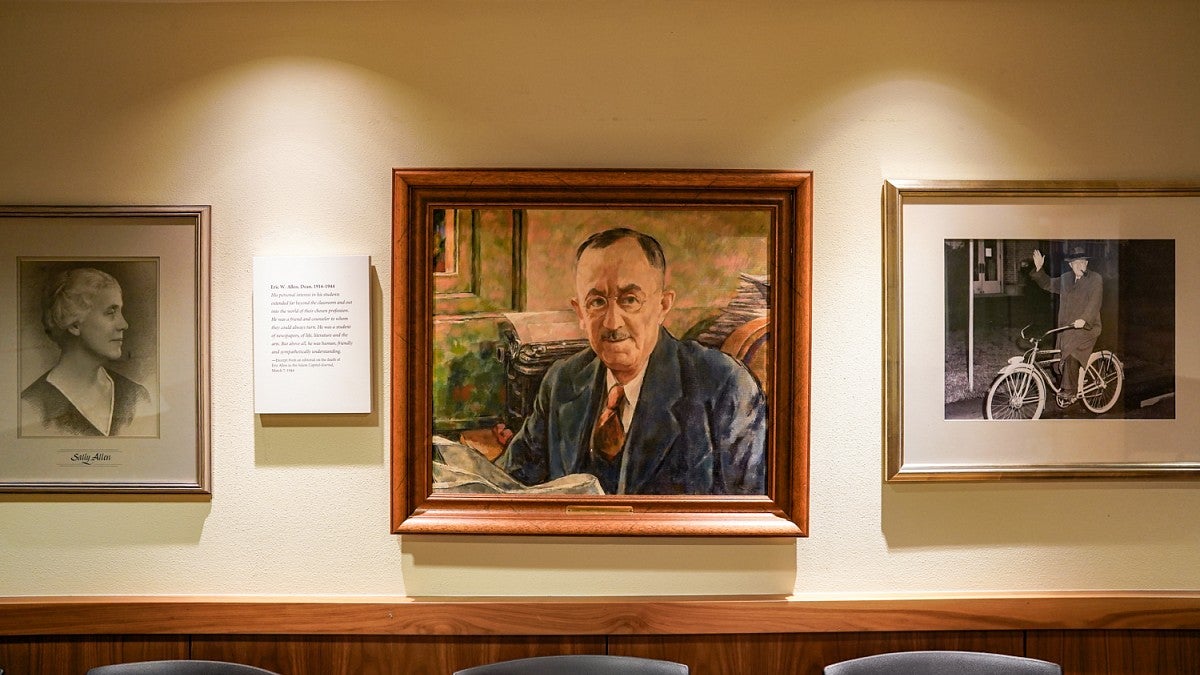
by Connor Baird, Class of ’26
Allen Hall has 28 rooms, but one is not like the others.
Tucked into the northwest corner of the third floor of the UO School of Journalism and Communication (SOJC) sits a room older than Allen Hall itself.
Students pass the windowless “living room” every day without noticing. Those who do venture in find wood-paneled walls, a sturdy conference table and a brick fireplace, a tribute to one of the University of Oregon’s most influential figures: Eric W. Allen, the SOJC’s first dean, who founded the school in 1916.
In stark contrast to the rest of the building, the room transports visitors to a world of 1920s architectural charm.
Jonas McMurrer ’25, an SOJC advertising alum, recalls his first experience in the room: “It felt like a blast from the past,” McMurrer said. “Like a portal to another time.”
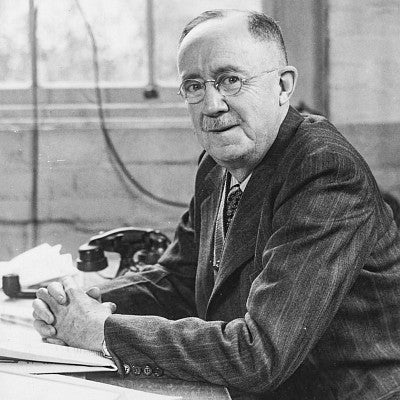
Allen Room is a tribute to SOJC’s first dean
Built in 1954, the Allen Room is a replica of Allen’s personal study — a cozy upstairs den in his home, like a second, smaller living room. Allen, who served as dean for 28 years, is remembered as one of the university’s most respected professors.
During his tenure, students often gathered in Allen’s actual den in his Eugene home on Birch Lane. They idolized him — not just as a professor, but as a mentor and intellectual figure. It was Allen, a newspaperman from Seattle, who was hired in 1912 to create the journalism department at UO. It would become one of the first in the nation, according to the Oregon Encyclopedia.
When Allen died in 1944, Marjorie Major Goodwin — the editor of The Daily Emerald that year and the second woman to hold the position — spoke at a memorial service held in his honor. She remembered him this way: “He inspired us, shook us up, quarreled with us so we would be obliged to examine our attitudes. He never let us sit in a passive vacuum without responsibility. He treated us as adult citizens with important work to do, vital problems to face, reasoned solutions to discover,” she said.
Ten years after he died, alumni who had once sat in his den raised money for a brick-and-wood replica of the storied room to be used for meetings and seminars. The “living room,” as some call it today, serves as a lasting tribute to Allen, ensuring more than just his name is etched into the building’s history.
Allen Room is a mystery to current students
Thomas Bivins, professor of media studies who recently served as the John L. Hulteng Chair in Media Ethics & Responsibility, calls himself the “de facto historian” of Allen Hall. With more than 40 years at the university, Bivins has amassed not only his own knowledge but also stories, testimonies and documents that span generations. When asked about his first experience with Allen Room 307, he didn’t hesitate to share.
“The room definitely stood out compared to the rest of the building,” Bivins said. “Everyone knew it was the Allen Room, a replica of his den. But nowadays, most students don’t know the history.”
He looked around at the wood paneling, the bookcases and, finally, the piece of wooden art above the hearth.
“That is a replica of the wood-carved piece that was over his fireplace,” he added. “That’s exactly what it looked like.”
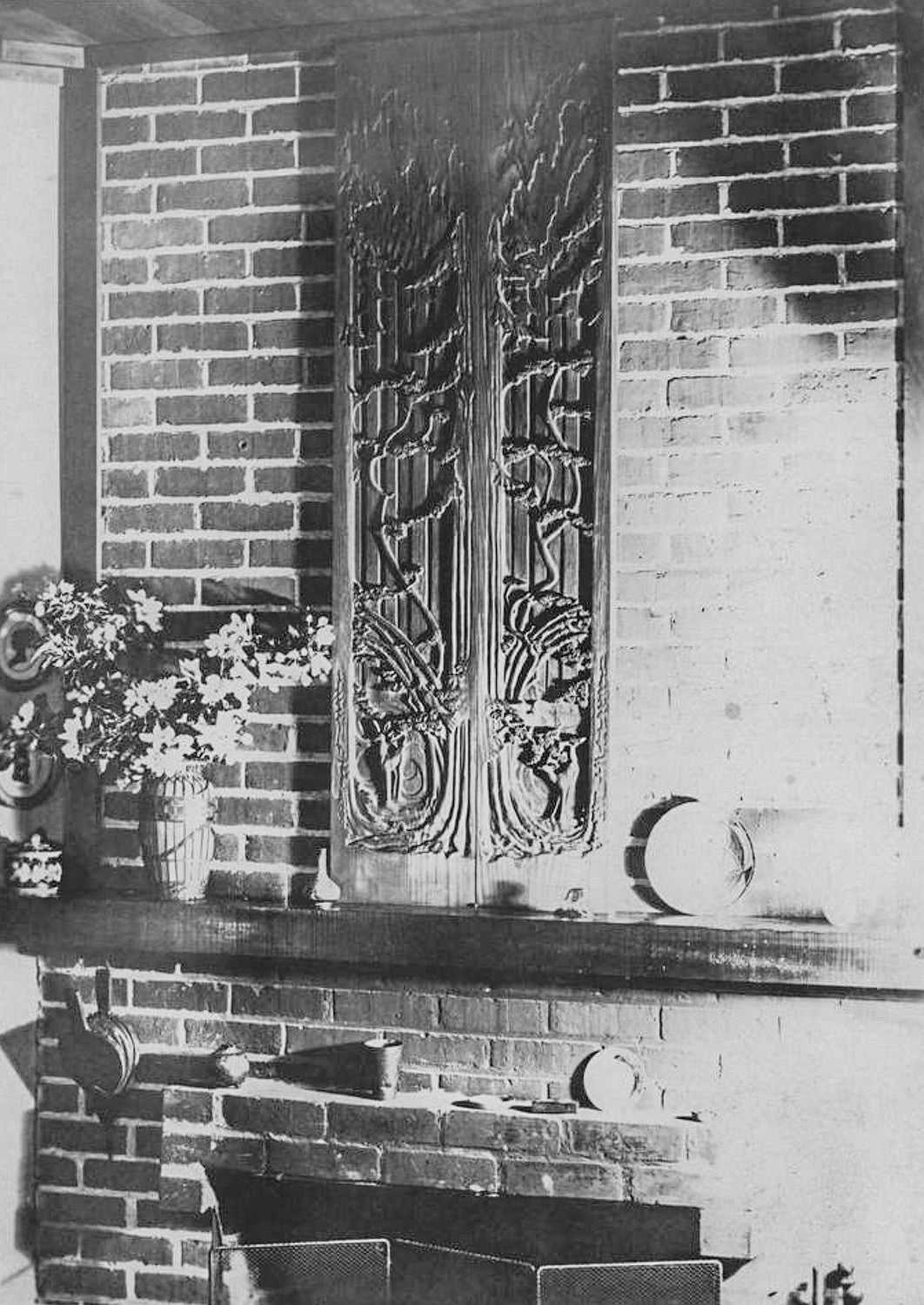
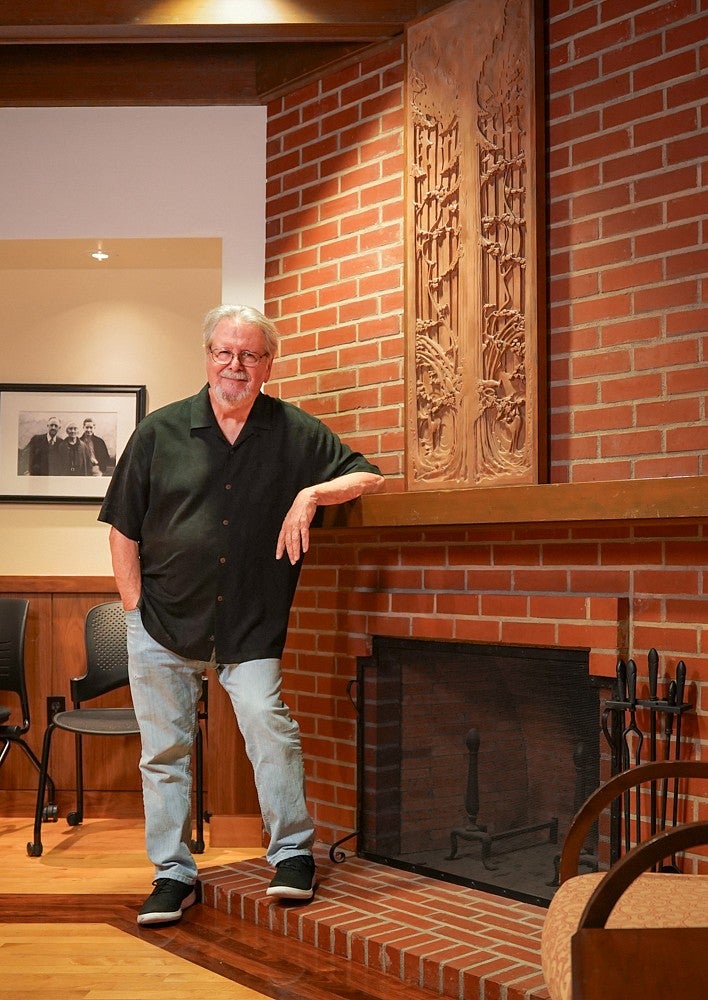
Bivins first stepped into the room in 1985. Back then, it was darker and less inviting.
“There was ugly carpeting on the floor,” he said, laughing. “And there was a picnic table in here with benches on either side, with one single light hanging overhead like a pool table.”
The decor may have changed, but the nostalgic feeling remains. Decades later, the room still carries a quiet weight: a rare pocket of calm in a building otherwise buzzing with lectures and hallway chatter.
For those who stumble upon it, Eric Allen Room 307 offers more than just a place to study. It’s a secret worth knowing — a hidden portal to the past tucked behind an unmarked door, and a reminder that even at a school as modern as the SOJC, history still claims its seat at the proverbial table.
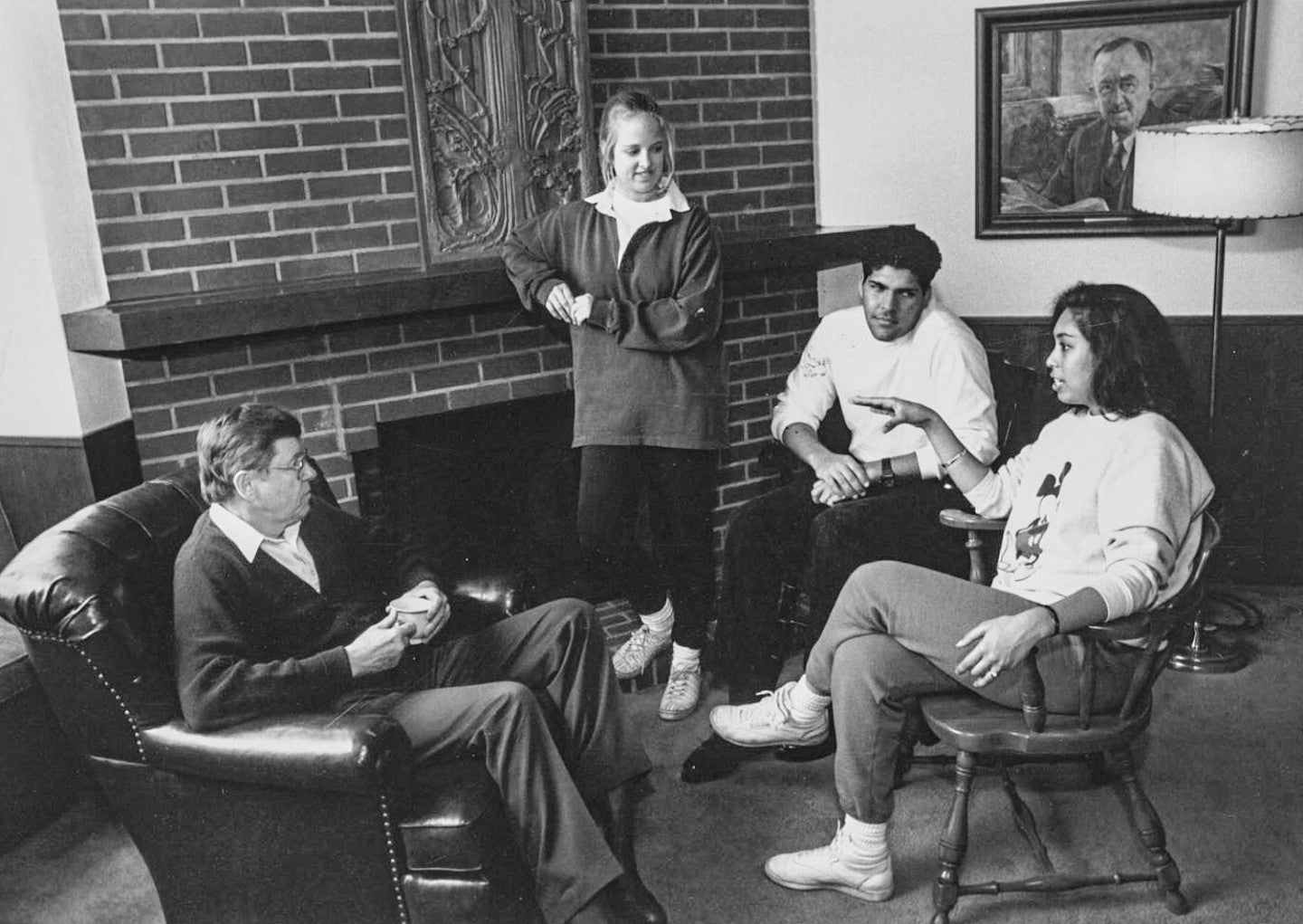
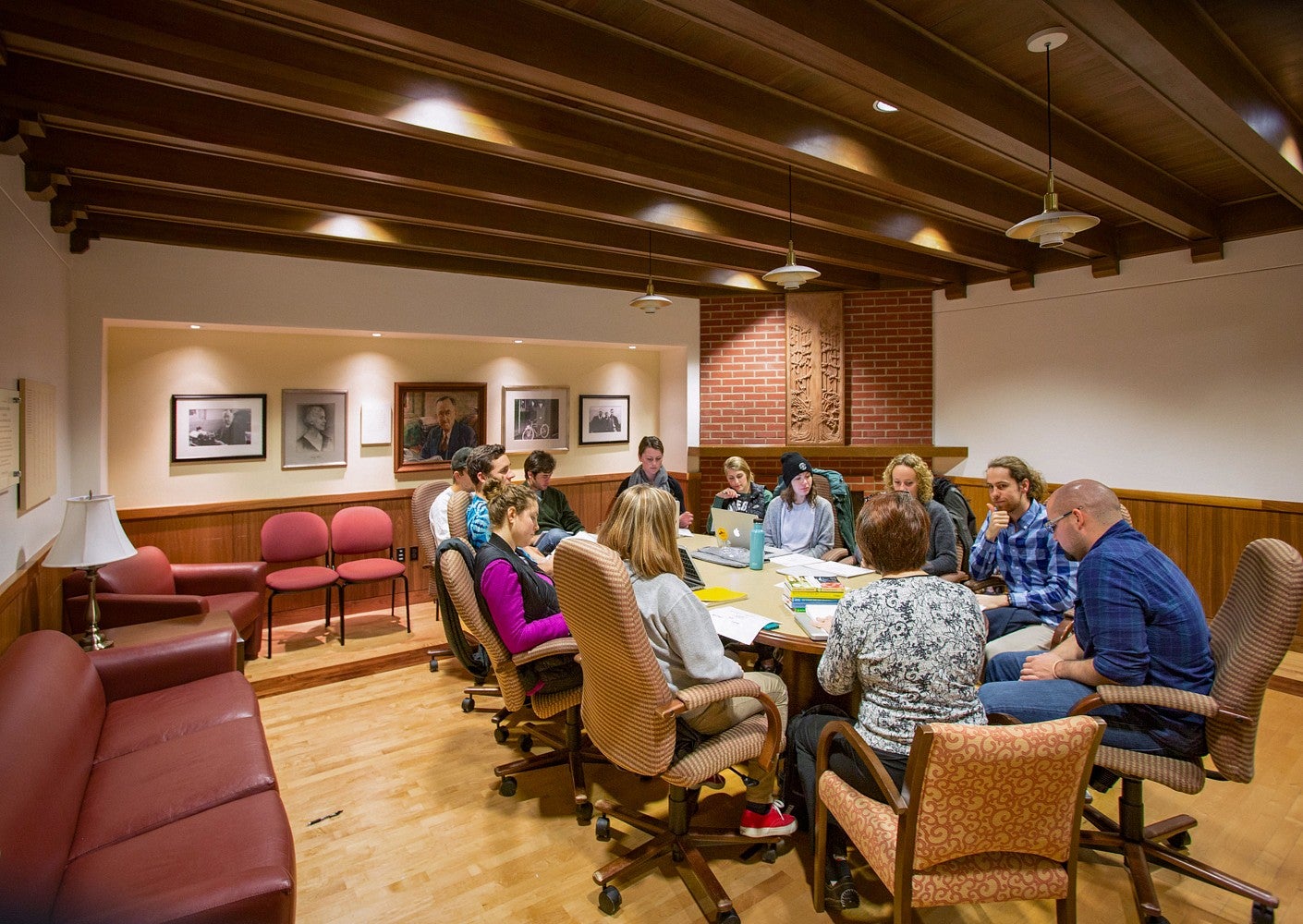
In 1953, a decade after Eric W. Allen died, alumni who had once sat in his den raised money for a brick-and-wood replica of the storied room where Allen and his students had passionate conversations. They intended for the room to be used for meetings and seminars where students could discuss issues with faculty — which it has, for the seven decades since. Left photo circa the 1990s, courtesy University Archives. Right photo from 2015, SOJC archives.
Connor Baird is a fourth-year advertising major at the SOJC with a minor in writing, public speaking and critical reasoning. He is a writing intern for the SOJC and the co-director of After Hours, an advertising portfolio club.

